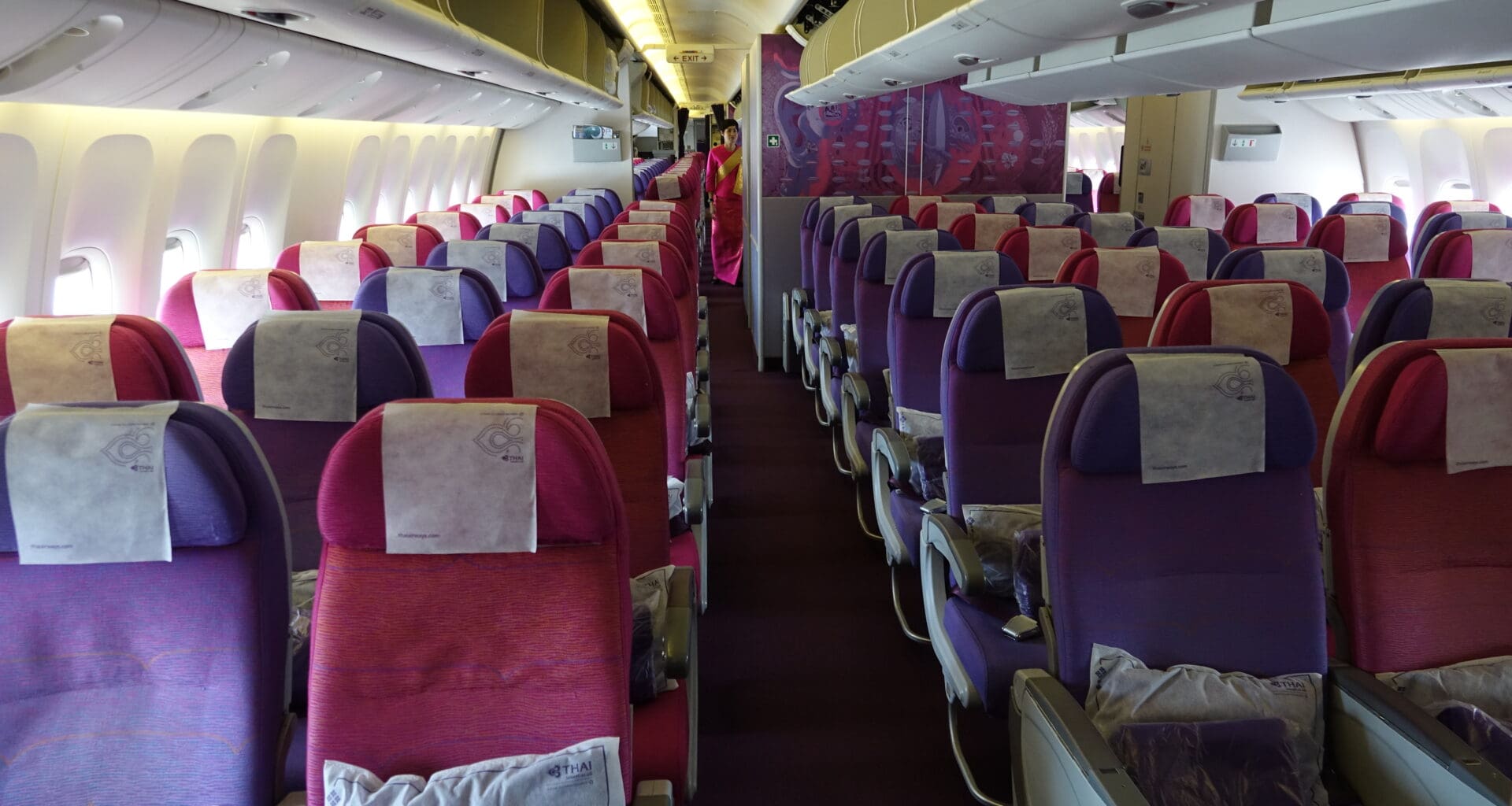Airlines are highly incentivised to boost their margins, so many airlines have added extra economy class seats onboard their planes. One of the aircraft types that has suffered the most from this is the 777, one of my favourite aircraft – this plane was originally meant to carry seats in a 9-abreast configuration (3-3-3), though a vast majority of airlines now carry a 10-abreast configuration in economy onboard these aircraft (3-4-3).
I thought it’d be fun to write a post exploring airlines that didn’t follow the trend, especially since these could be airlines worth seeking out in the future.
Squeezing an extra economy seat onboard planes
Generally, there are four widebody aircraft types out there where the number of seats across on the plane varies from airline to airline. These are the 777, 787, A350, and A330. (There are a few 767s that have 8-abreast seating instead of the designed 7-abreast, though those are far and few at the moment.)
The A330s and A350s have standard industry configurations of 8-abreast and 9-abreast specifically, and standard seats in economy are 18-inches wide. There are some airlines that squeeze one more seat across onboard these planes resulting in a super tight 16.5 inch wide seat (Cebu Pacific), though most airlines dare not do so in order to protect a sliver of dignity and reputation.
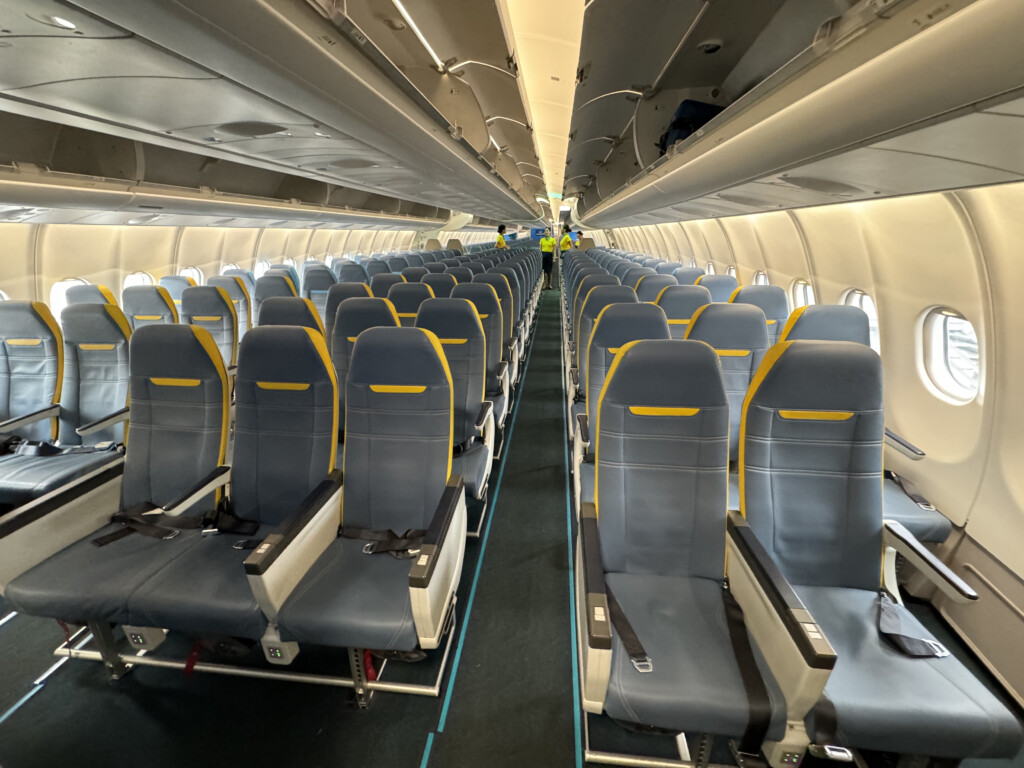
Cebu Pacific’s notoriously uncomfortable A330neos
Meanwhile, pretty much every single 787 operator has decided to install a ninth seat abreast onboard their economy cabins, as opposed to the originally designed eight. The only operator countering the trend is Japan Airlines – even their competitor ANA caved and added a ninth seat abreast a few years ago. This makes the seats just over 17 inches wide, which has become the industry standard nowadays.

All but one 787 operator has decided to go 9-abreast in economy
This leaves the 777, where different airlines have decided to take different approaches to whether to add the tenth seat abreast to their configuration. When the 777 was introduced in 1995, every operator outfitted the economy class cabin with a 9-abreast configuration, whether that be 3-3-3 or 2-5-2. 3-3-3 became the industry standard, and many airlines still use this today. Each seat is about 18.5 inches wide in this configuration.
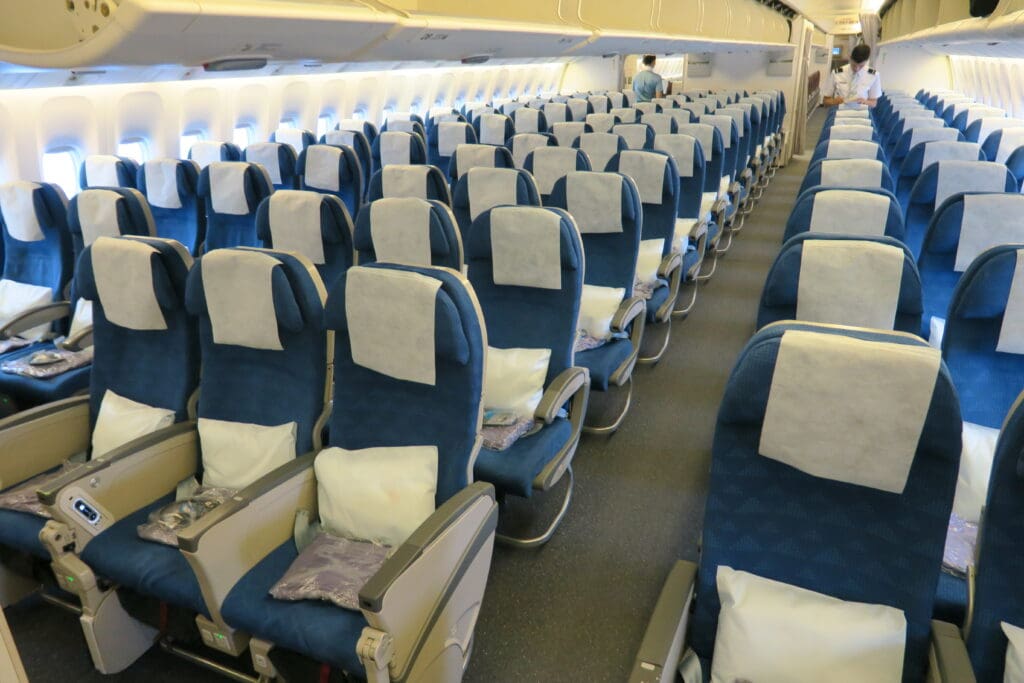
Korean Air’s 777 economy class cabin is in a 3-3-3 configuration on all but one plane
Meanwhile, many major carriers (including leading carriers) have decided to install a 10th seat abreast in their economy class cabin, making for a 3-4-3 configuration. The seats are 17 inches wide – slightly tighter than you’d get on a 787, and noticeably tighter than if the seat were 9-abreast.
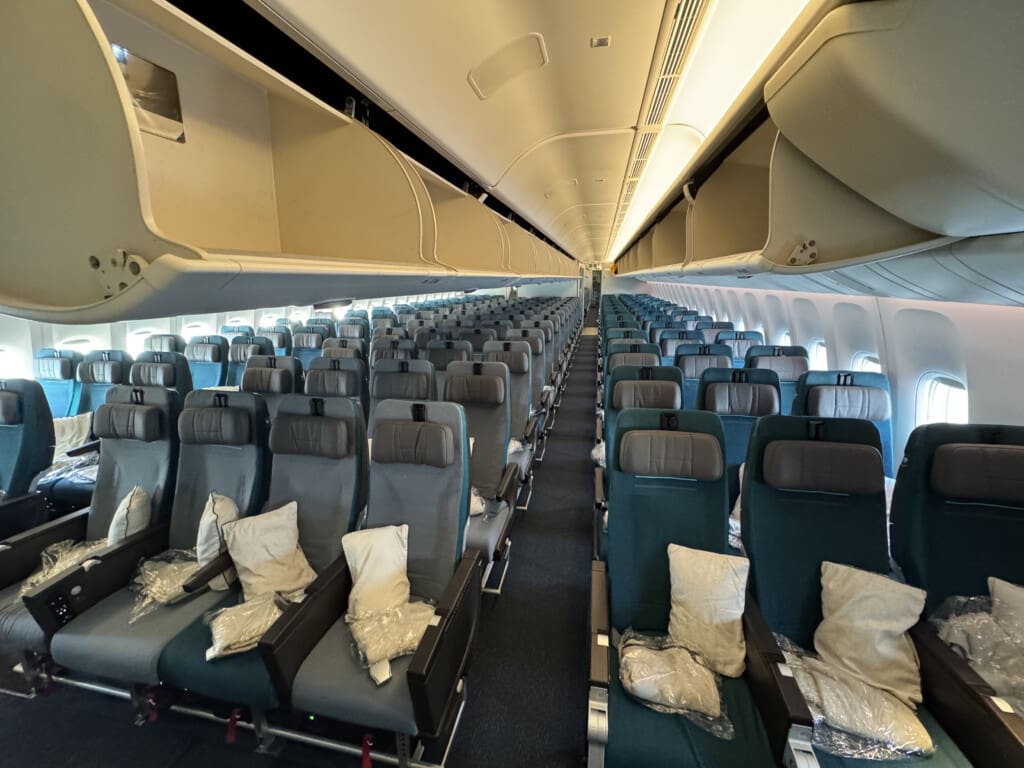
All of Cathay Pacific’s 777s have a 10-abreast configuration in economy
So, who has a 9-abreast configuration onboard their 777s?
Airlines that have a 9-abreast configuration onboard their 777s
It’s perhaps not surprising to many that most of the airlines sporting a 9-abreast configuration on their 777s are East Asian carriers. Here are the major players that have a 9-abreast configuration onboard their economy class product:
- Singapore Airlines has a 9-abreast configuration onboard all of their 777s
- Thai Airways has a 9-abreast configuration onboard all of their 777s
- Japan Airlines has a 9-abreast configuration onboard all of their longhaul 777s (some domestic 777s feature a 3-4-3 product)
- Korean Air had plans to move to a 10-abreast configuration, though this was blocked by the government due to breaching regulatory agreements with their merger with Asiana; currently only one aircraft is flying with a 10-abreast configuration, with the rest featuring a 9-abreast configuration

Singapore Airlines has a comfortable 9-abreast configuration in economy on all of their 777s
Here are some surprising airlines (to me) that have a 9-abreast configuration in economy class:
- Air China is the only Chinese airline to maintain a 3-3-3 configuration onboard most (20 out of 28) 777s; however, their eight 777s without first class feature a 3-4-3 configuration (none of the other Chinese airlines have any aircraft with a 3-3-3 configuration)
- Air India has always retained a 3-3-3 configuration on their 777s
- Impressively, although they fly to more destinations than any other carrier, Turkish Airlines manages to maintain a 3-3-3 configuration onboard all of their 777s
- Ethiopian Airlines also offers a 3-3-3 configuration onboard all of its 777s
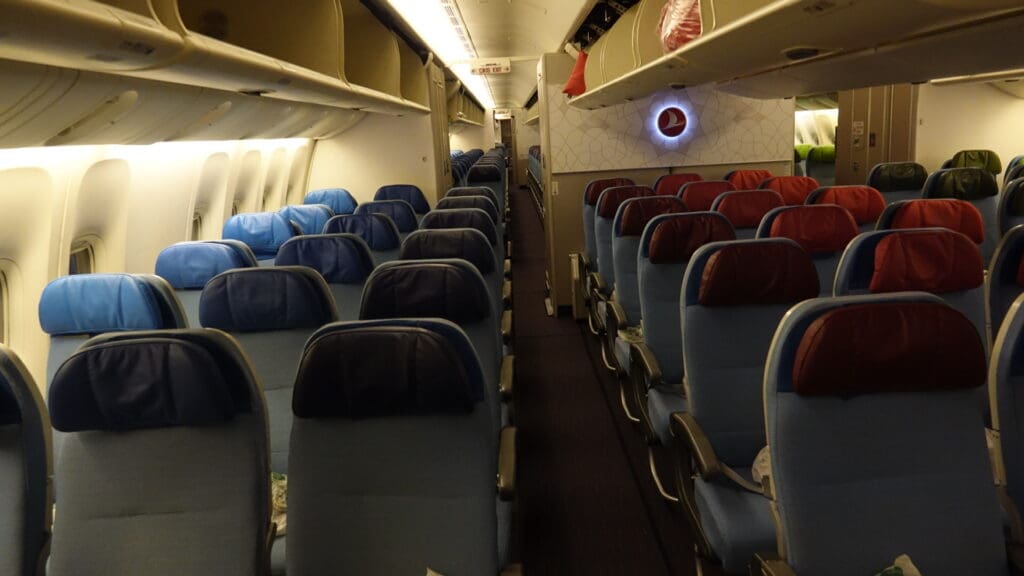
Turkish Airlines impressively never caved to join their Middle Eastern counterparts with a 3-4-3 economy product
The most surprising airlines that have a 10-abreast configuration onboard their 777s
The industry standard for airlines is to have a 10-abreast configuration on their 777s. Especially in Europe and the U.S., expect 777s to have a 3-4-3 configuration: whether that’s British Airways, Austrian, Air France/KLM, SWISS, etc. in Europe, American and United in the U.S., Air New Zealand, etc..
However, here are airlines that are typically renowned for having comfortable cabins, though have a 10-abreast configuration in economy onboard their 777s:
- Cathay Pacific may have won the world’s best economy seat, though they have a 10-abreast configuration onboard all of their 777s
- EVA Air has a 10-abreast configuration on some of their 777s, though has retained a 9-abreast configuration on others. They almost exclusively use the 10-abreast 777s for their Europe flights
- China Airlines is known for being quite premium as well, though has a 3-4-3 configuration on all of their 777s
- ANA has gravitated towards a 10-abreast configuration on their newest 777s, though their older 777s still have an odd 2-4-3 configuration
- Emirates, Etihad, and Qatar Airways all have a 10-abreast configuration onboard their 777s (they actually have been the first airlines to do so) – the only exception is Qatar Airways’ ex-Virgin Australia 777s

Some of EVA Air’s 777s have a 10-abreast configuration: these consistently operate their Europe flights
The 777X will see a 3-4-3 configuration as the industry standard
As we get ready for the Boeing 777X to roll out, Boeing has announced that they have widened the usable fuselage onboard the 777X, which means that we’ll be expecting the industry standard economy configuration to be 3-4-3. On the plus side, this design update means that each seat will be wider.
Conclusion
Gone are the days where the 9-abreast configuration was the industry standard onboard the 777. However, it’s interesting to see which airlines are not budging and moving to a 10-abreast configuration onboard their 777s – whether it’s the inability to get new seats, or a conscious investment in the passenger product.
What’s your favourite 777 economy product?





